Untitled
2018
Il putto e la pece, agglomerata in un fossile, posti su un basamento rettangolare, sono spunti di riflessione che guidano il visitatore nella lettura dell’opera ispirata al dualismo durevolezza e precarietà che si traduce qui in una tragica visione monumentale.
La colonna a destra del basamento, da cui si è staccata, sottostà all’incombenza del soffitto, come una moderna macchina che ha tentato di resistere al tempo ma è stata vittima della propria transitorietà. L’utilizzo degli pneumatici riflette proprio questo assunto: che la modernità è un processo di trasformazione instancabile, continuo, veloce. Sulla pece del manto stradale non fanno a tempo a imprimersi le tracce del nostro passaggio, che già altra pece viene gettata. Allo stesso tempo la presenza empirica e la posizione casuale nella stanza di questa forma richiamano l’immagine di un ritrovamento archeologico. Non solo, la colonna è l’emblema della monumentalità assoggettante – civile e clericale – di cui la storia è piena e di fronte cui ci poniamo, volente o nolente, in atteggiamento contemplativo. Tutta l’opera è un ossimoro in cui la materia si scontra con la forma attivando un processo di memoria incorniciato dalla citazione di Peter Handke da Canto alla durata: “Durata si ha quando in un bambino che non è più un bambino e che forse è già vecchio ritrovo gli occhi del bambino”. L’uso del linguaggio in un’opera tanto enigmatica chiude il cerchio della sua comprensione restituendole un po’ di leggerezza. La stessa leggerezza che ha guidato il gesto artistico di Alessio Barchitta la cui ricerca si concentra spesso sui significati possibili di memoria.
Il concetto di durata di cui Handke scrive è verosimilmente associabile al dejavù o all’esperienza proustiana che facciamo quando un odore o un sapore ci ricordano qualcosa che abbiamo vissuto. Entrare nella stanza di Alessio può significare questo: fare un viaggio nel tempo attraverso le sensazioni che ricordiamo di aver provato in un luogo di culto che si è materializzato hic et nunc in una forma straniante.
Testo di Silvia Maiuri
Putto and pitch, agglomerated in a fossil, placed on a basement rectangular, they are points of reflection that guide the visitor in reading the work inspired by dualism durability and precariousness that here translate into a tragic monumental vision.
The column to the right of the base, from which it came out, is below to the weight of the ceiling, like a modern machine that tried to resist time but was the victim of its own transience. The use of tires reflects this assumption: that modernity is a transformation process tireless, continuous, fast. On the road we do not have time to print the traces of our passage, another layer of asphalt has already been launched. At the same time, the empirical presence and the random position in the room of this form recall the image of a discovery Archaeological. Not only that, the column is the emblem of monumentality
submission – civil and clerical – of which the story is full and before which we approach, willy-nilly, in contemplative attitude. The entire work is an oxymoron in which the material clashes with the form, activating a memory process framed by the quote by Peter Handke del Canto at the time: “The duration is when in a child who is no longer a child and who perhaps it is already old I find the eyes of the child “. The use of language in such an enigmatic work closes the circle of his understanding, giving it back a little lightness. The same lightness that guided the artistic gesture of Alessio whose research often focuses on possible meanings of memory.
The concept of duration that Handke writes is probably associated with the dejavù or the Proustian experience we do when a smell or taste reminds us of something we have experienced. Entering Alessio’s room can mean this: taking a journey through time through the sensations we remember having experienced in a place of worship that has materialized hic et nunc in an alienating form.
Text by Silvia Maiuri
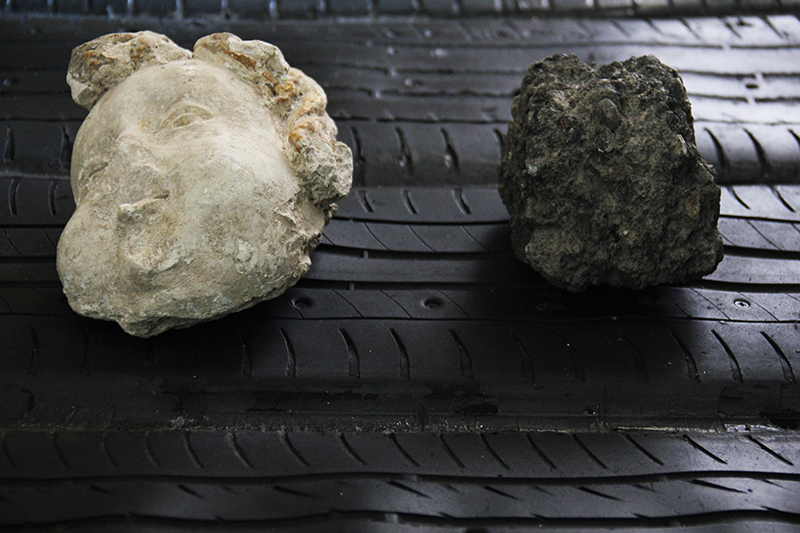
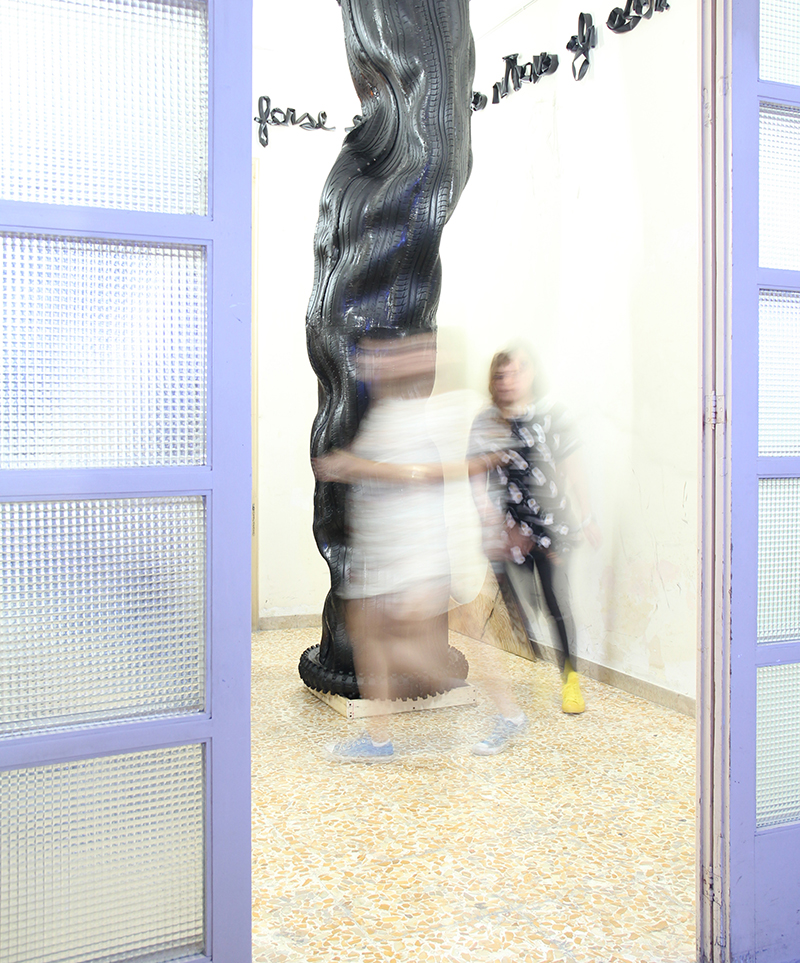
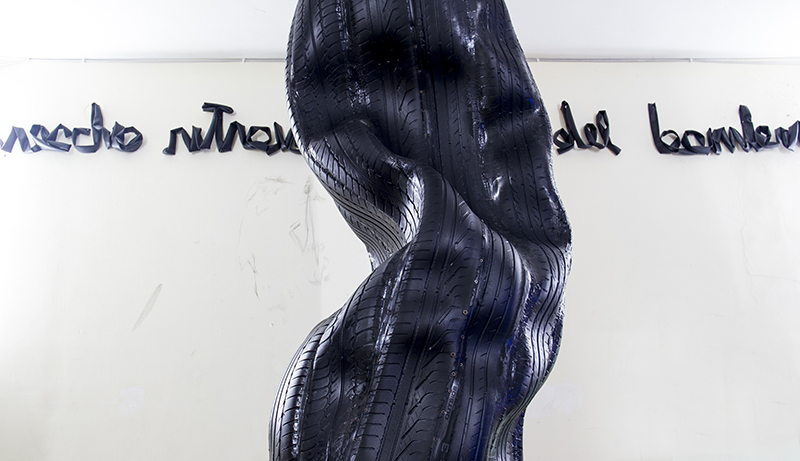
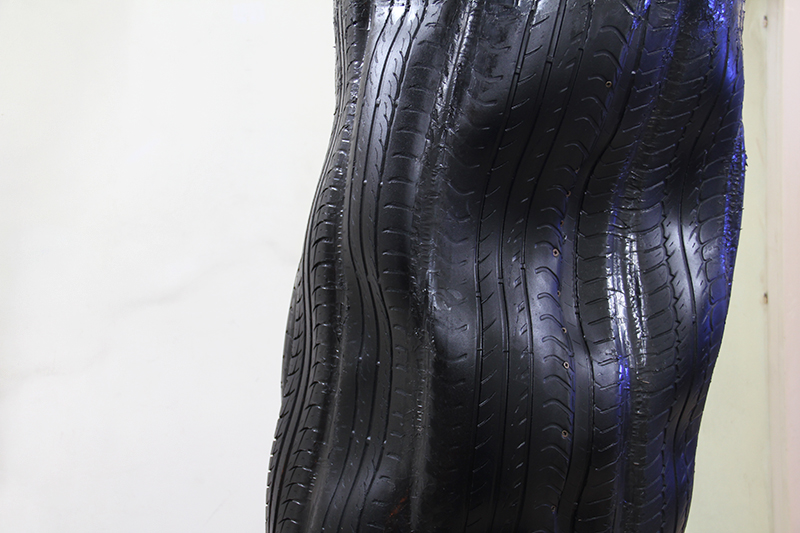
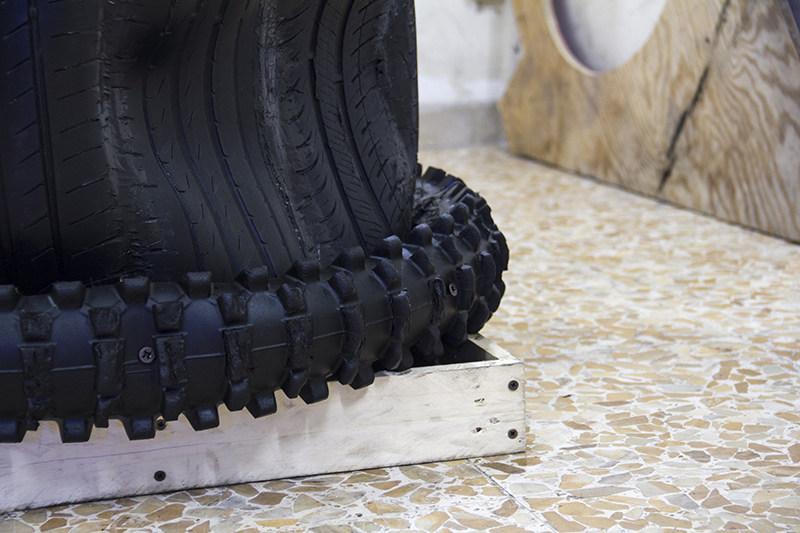
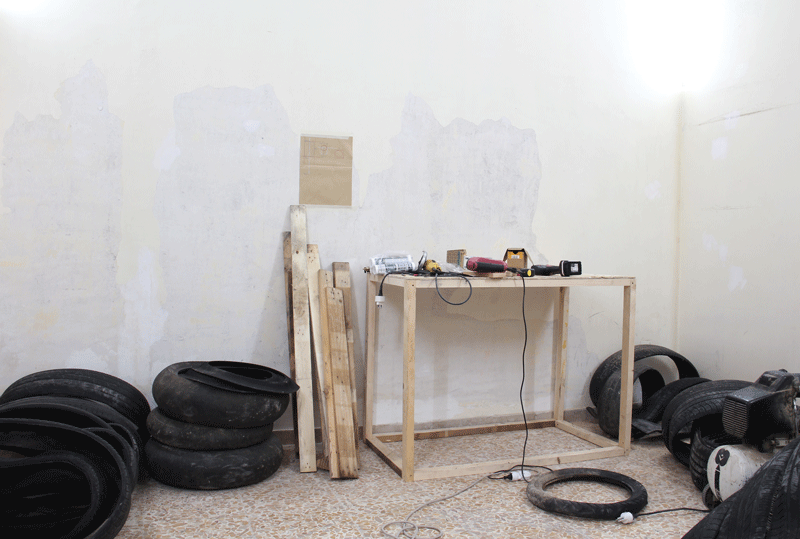
Pneumatici, multistrato marino, viti, silicone, camere d'aria.
Dimensioni ambientali
2018
